Blog - Foot Doctor, Chambersburg and McConnellsburg, PA
Ways to Tell You May Have Developed Gout
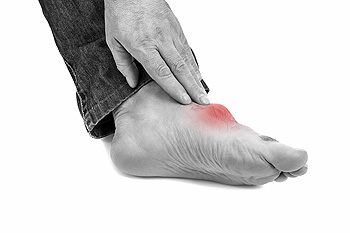 Gout is an inflammatory form of arthritis that can cause a great deal of foot pain. When the uric acid levels in the body are too high, the acid can crystallize and build up in your joints, creating gout symptoms. Typically, foods that are high in purine, such as red meats and shellfish, can be contributing factors that may lead to the development of gout. Some common symptoms that can be key indicators that gout is present are intense pain in the joints, specifically the big toe, redness and swelling of the joints, difficulty being able to move the joints, and the appearance of large lumps under the skin, typically referred to as tophi. If left untreated, gout can lead to a number of serious health complications including heart disease, type two diabetes, and chronic kidney disease. For more information on how to control gout symptoms and manage the pain that coincides, it is extremely important that you are under the care of a podiatrist.
Gout is an inflammatory form of arthritis that can cause a great deal of foot pain. When the uric acid levels in the body are too high, the acid can crystallize and build up in your joints, creating gout symptoms. Typically, foods that are high in purine, such as red meats and shellfish, can be contributing factors that may lead to the development of gout. Some common symptoms that can be key indicators that gout is present are intense pain in the joints, specifically the big toe, redness and swelling of the joints, difficulty being able to move the joints, and the appearance of large lumps under the skin, typically referred to as tophi. If left untreated, gout can lead to a number of serious health complications including heart disease, type two diabetes, and chronic kidney disease. For more information on how to control gout symptoms and manage the pain that coincides, it is extremely important that you are under the care of a podiatrist.
Gout is a foot condition that requires certain treatment and care. If you are seeking treatment, contact Dr. Steven Schwartz from Pennsylvania. Our doctor will treat your foot and ankle needs.
What Is Gout?
Gout is a type of arthritis caused by a buildup of uric acid in the bloodstream. It often develops in the foot, especially the big toe area, although it can manifest in other parts of the body as well. Gout can make walking and standing very painful and is especially common in diabetics and the obese.
People typically get gout because of a poor diet. Genetic predisposition is also a factor. The children of parents who have had gout frequently have a chance of developing it themselves.
Gout can easily be identified by redness and inflammation of the big toe and the surrounding areas of the foot. Other symptoms include extreme fatigue, joint pain, and running high fevers. Sometimes corticosteroid drugs can be prescribed to treat gout, but the best way to combat this disease is to get more exercise and eat a better diet.
If you have any questions please feel free to contact our offices located in Chambersburg, and Mcconnellsburg, PA . We offer the newest diagnostic and treatment technologies for all your foot and ankle needs.
How Stretching can Help Increase Circulation to the Feet
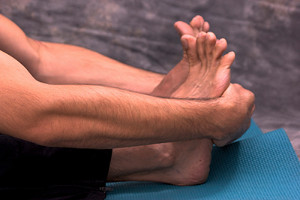 If you are someone who struggles with diabetes, neuropathy, or poor circulation, you may be aware of the benefits stretching has for the body, particularly the feet. Staying active by going for walks or performing routine stretches and exercises can be helpful for improving blood circulation within the feet. Ankle pumping, for example, is a great stretch you can perform by laying down on your back with your feet straight ahead, and flexing your toes upwards. You can even perform useful stretches while seated. Heel raises, for example, is a stretch that is done by sitting in a chair, and slowly raising your heels, holding for three seconds, and lowering them back down. You can do one heel at a time, or raise both heels together. This stretch can also be performed standing straight up and lifting the heels as well. For more advice on what stretches can help to benefit the functionality of your feet, it is suggested that you speak with a podiatrist.
If you are someone who struggles with diabetes, neuropathy, or poor circulation, you may be aware of the benefits stretching has for the body, particularly the feet. Staying active by going for walks or performing routine stretches and exercises can be helpful for improving blood circulation within the feet. Ankle pumping, for example, is a great stretch you can perform by laying down on your back with your feet straight ahead, and flexing your toes upwards. You can even perform useful stretches while seated. Heel raises, for example, is a stretch that is done by sitting in a chair, and slowly raising your heels, holding for three seconds, and lowering them back down. You can do one heel at a time, or raise both heels together. This stretch can also be performed standing straight up and lifting the heels as well. For more advice on what stretches can help to benefit the functionality of your feet, it is suggested that you speak with a podiatrist.
Stretching the feet is a great way to prevent injuries. If you have any concerns with your feet consult with Dr. Steven Schwartz from Pennsylvania. Our doctor will assess your condition and provide you with quality foot and ankle treatment.
Stretching the Feet
Being the backbone of the body, the feet carry your entire weight and can easily become overexerted, causing cramps and pain. As with any body part, stretching your feet can serve many benefits. From increasing flexibility to even providing some pain relief, be sure to give your feet a stretch from time to time. This is especially important for athletes or anyone performing aerobic exercises, but anyone experiencing foot pain or is on their feet constantly should also engage in this practice.
Great ways to stretch your feet:
- Crossing one leg over the others and carefully pull your toes back. Do 10-20 repetitions and repeat the process for each foot
- Face a wall with your arms out and hands flat against the wall. Step back with one foot and keep it flat on the floor while moving the other leg forward. Lean towards the wall until you feel a stretch. Hold for 30 seconds and perform 10 repetitions for each foot
- Be sure not to overextend or push your limbs too hard or you could risk pulling or straining your muscle
Individuals who tend to their feet by regular stretching every day should be able to minimize foot pain and prevent new problems from arising.
If you have any questions, please feel free to contact our offices located in Chambersburg, and Mcconnellsburg, PA . We offer the newest diagnostic and treatment technologies for all your foot care needs.
What Causes Cracked Heels?
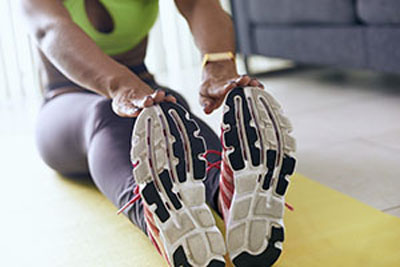 The uncomfortable condition that is known as cracked heels can cause difficulty in walking and wearing shoes. They are described as deep cracks, or fissures in the heel of the foot, and bleeding may occur in severe cases. There are several reasons why this condition may develop. These can include frequently wearing shoes that have an open back, or standing for long periods of time. Additionally, existing medical conditions such as psoriasis or eczema may cause the skin to become dry, and cracked heels may develop. Research has indicated it may be beneficial to drink plenty of water, as this may help the body to stay hydrated. If you notice your heels are dry, it is suggested that you seek the counsel of a podiatrist who can recommend the best treatment options for cracked heels.
The uncomfortable condition that is known as cracked heels can cause difficulty in walking and wearing shoes. They are described as deep cracks, or fissures in the heel of the foot, and bleeding may occur in severe cases. There are several reasons why this condition may develop. These can include frequently wearing shoes that have an open back, or standing for long periods of time. Additionally, existing medical conditions such as psoriasis or eczema may cause the skin to become dry, and cracked heels may develop. Research has indicated it may be beneficial to drink plenty of water, as this may help the body to stay hydrated. If you notice your heels are dry, it is suggested that you seek the counsel of a podiatrist who can recommend the best treatment options for cracked heels.
Cracked heels are unsightly and can cause further damage to your shoes and feet. If you have any concerns, contact Dr. Steven Schwartz from Pennsylvania. Our doctor can provide the care you need to keep you pain-free and on your feet.
Cracked Heels
Cracked heels appear unappealing and can make it harder for you walk around in sandals. Aside from looking unpleasant, cracked heels can also tear stockings, socks, and wear out your shoes. There are several methods to help restore a cracked heel and prevent further damage.
How Do You Get Them?
Dry skin is the number one culprit in creating cracked heels. Many athletes, walkers, joggers, and even swimmers suffer from cracked heels. Age and skin oil production play a role to getting cracked heels as well.
Promote Healing
Over the counter medicines can help, especially for those that need instant relief or who suffer from chronic dry feet.
Wear Socks – Wearing socks with medicated creams helps lock in moisture.
Moisturizers – Applying both day and night will help alleviate dryness which causes cracking.
Pumice Stones – These exfoliate and remove dead skin, which allows for smoother moisturizer application and better absorption into the skin.
Change in Diet
Eating healthy with a well-balanced diet will give the skin a fresh and radiant look. Your body responds to the kinds of food you ingest. Omega-3 fatty acids and zinc supplements can also revitalize skin tissue.
Most importantly, seek professional help if unsure how to proceed in treating cracked heels. A podiatrist will help you with any questions or information needed.
If you have any questions, please feel free to contact our offices located in Chambersburg, and Mcconnellsburg, PA . We offer the newest diagnostic and treatment technologies for all your foot care needs.
Who May Be Prone to Getting Cuboid Syndrome?
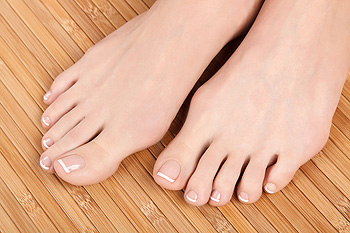 There are twenty-six bones in each foot, and the cuboid bone is located on the outside edge below the ankle. The condition that is known as cuboid syndrome can occur as a result of overstretched or torn tendons which connect to the cuboid bone. It can be a common ailment among people who frequently participate in running and jumping activities, and cause pain and discomfort. Common symptoms that can be associated with cuboid syndrome can consist of a dull ache when this condition occurs from repetitive strain. If a sudden injury occurs, a sharp pain is immediately felt, and it may be difficult to walk. Effective treatment can consist of resting the affected foot, followed by introducing techniques that can return the tendons to their normal alignment. If you are experiencing pain in the outside of your foot, it is suggested that you consult with a podiatrist who can properly diagnose cuboid syndrome.
There are twenty-six bones in each foot, and the cuboid bone is located on the outside edge below the ankle. The condition that is known as cuboid syndrome can occur as a result of overstretched or torn tendons which connect to the cuboid bone. It can be a common ailment among people who frequently participate in running and jumping activities, and cause pain and discomfort. Common symptoms that can be associated with cuboid syndrome can consist of a dull ache when this condition occurs from repetitive strain. If a sudden injury occurs, a sharp pain is immediately felt, and it may be difficult to walk. Effective treatment can consist of resting the affected foot, followed by introducing techniques that can return the tendons to their normal alignment. If you are experiencing pain in the outside of your foot, it is suggested that you consult with a podiatrist who can properly diagnose cuboid syndrome.
Cuboid syndrome, also known as cuboid subluxation, occurs when the joints and ligaments near the cuboid bone in the foot become torn. If you have cuboid syndrome, consult with Dr. Steven Schwartz from Pennsylvania. Our doctor will assess your condition and provide you with quality foot and ankle treatment.
Cuboid syndrome is a common cause of lateral foot pain, which is pain on the outside of the foot. The condition may happen suddenly due to an ankle sprain, or it may develop slowly overtime from repetitive tension through the bone and surrounding structures.
Causes
The most common causes of cuboid syndrome include:
- Injury – The most common cause of this ailment is an ankle sprain.
- Repetitive Strain – Tension placed through the peroneus longus muscle from repetitive activities such as jumping and running may cause excessive traction on the bone causing it to sublux.
- Altered Foot Biomechanics – Most people suffering from cuboid subluxation have flat feet.
Symptoms
A common symptom of cuboid syndrome is pain along the outside of the foot which can be felt in the ankle and toes. This pain may create walking difficulties and may cause those with the condition to walk with a limp.
Diagnosis
Diagnosis of cuboid syndrome is often difficult, and it is often misdiagnosed. X-rays, MRIs and CT scans often fail to properly show the cuboid subluxation. Although there isn’t a specific test used to diagnose cuboid syndrome, your podiatrist will usually check if pain is felt while pressing firmly on the cuboid bone of your foot.
Treatment
Just as the range of causes varies widely, so do treatments. Some more common treatments are ice therapy, rest, exercise, taping, and orthotics.
If you have any questions, please feel free to contact our offices located in Chambersburg, and Mcconnellsburg, PA . We offer the newest diagnostic and treatment technologies for all your foot care needs.
Excessively Sweaty Feet
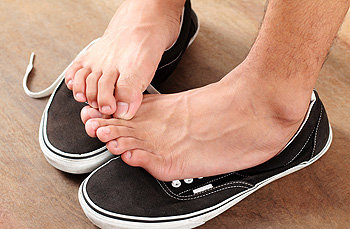 Although sweating while working out is common, if you find yourself excessively sweating, especially in the foot region, you may have developed a condition that is known as hyperhidrosis. This can cause excessive sweating even with minimal physical activity. Gout, diabetes, low blood sugar, and issues with the thyroid or nervous system, may all be additional causes to hyperhidrosis. Genetics and body weight can be factors as well. This condition can also cause an unpleasant odor to come from the affected area. If you are experiencing more than normal sweating of the feet, and would like information on treatment techniques, please consult with a podiatrist.
Although sweating while working out is common, if you find yourself excessively sweating, especially in the foot region, you may have developed a condition that is known as hyperhidrosis. This can cause excessive sweating even with minimal physical activity. Gout, diabetes, low blood sugar, and issues with the thyroid or nervous system, may all be additional causes to hyperhidrosis. Genetics and body weight can be factors as well. This condition can also cause an unpleasant odor to come from the affected area. If you are experiencing more than normal sweating of the feet, and would like information on treatment techniques, please consult with a podiatrist.
If you are suffering from hyperhidrosis contact Dr. Steven Schwartz of Pennsylvania. Our doctor can provide the care you need to attend to all of your foot and ankle needs.
Hyperhidrosis of the Feet
Hyperhidrosis is a rare disorder that can cause people to have excessive sweating of their feet. This can usually occur all on its own without rigorous activity involved. People who suffer from hyperhidrosis may also experience sweaty palms.
Although it is said that sweating is a healthy process meant to cool down the body temperature and to maintain a proper internal temperature, hyperhidrosis may prove to be a huge hindrance on a person’s everyday life.
Plantar hyperhidrosis is considered to be the main form of hyperhidrosis. Secondary hyperhidrosis can refer to sweating that occurs in areas other than the feet or hands and armpits. Often this may be a sign of it being related to another medical condition such as menopause, hyperthyroidism and even Parkinson’s disease.
In order to alleviate this condition, it is important to see your doctor so that they may prescribe the necessary medications so that you can begin to live a normal life again. If this is left untreated, it is said that it will persist throughout an individual’s life.
A last resort approach would be surgery, but it is best to speak with your doctor to find out what may be the best treatment for you.
If you have any questions please feel free to contact our offices located in Chambersburg, and Mcconnellsburg, PA . We offer the newest diagnostic and treatment technologies for all your foot and ankle needs.
A Stress Fracture in the Foot Is a Hairline Crack
 A hairline crack in the bones of the feet is referred to as a stress fracture. This condition gradually occurs, and is often the result of frequently participating in running and jumping activities. Early symptoms can include pain while the activity is pursued. Common symptoms linked with this condition may diminish when prompt treatment is started. Many runners who have endured stress fractures often try to ignore the pain and discomfort that typically accompanies this condition, despite being aware of the rest that is needed for proper healing. Additional symptoms can include swelling, tenderness, and weakness in the foot. Effective treatment methods can include elevating the foot which may help to reduce swelling, and it is beneficial to wrap the foot in an elastic bandage that can offer adequate support. If you have a stress fracture that is impacting your foot, it is strongly suggested that you consult with a podiatrist who can recommend the best treatment options for you.
A hairline crack in the bones of the feet is referred to as a stress fracture. This condition gradually occurs, and is often the result of frequently participating in running and jumping activities. Early symptoms can include pain while the activity is pursued. Common symptoms linked with this condition may diminish when prompt treatment is started. Many runners who have endured stress fractures often try to ignore the pain and discomfort that typically accompanies this condition, despite being aware of the rest that is needed for proper healing. Additional symptoms can include swelling, tenderness, and weakness in the foot. Effective treatment methods can include elevating the foot which may help to reduce swelling, and it is beneficial to wrap the foot in an elastic bandage that can offer adequate support. If you have a stress fracture that is impacting your foot, it is strongly suggested that you consult with a podiatrist who can recommend the best treatment options for you.
Activities where too much pressure is put on the feet can cause stress fractures. To learn more, contact Dr. Steven Schwartz from Pennsylvania. Our doctor can provide the care you need to keep your pain free and on your feet.
Dealing with Stress Fractures of the Foot and Ankle
Stress fractures occur in the foot and ankle when muscles in these areas weaken from too much or too little use. The feet and ankles then lose support when walking or running from the impact of the ground. Since there is no protection, the bones receive the full impact of each step. Stress on the feet can cause cracks to form in the bones, thus creating stress fractures.
What Are Stress Fractures?
Stress fractures occur frequently in individuals whose daily activities cause great impact on the feet and ankles. Stress factors are most common among:
- Runners
- People affected with Osteoporosis
- Tennis or basketball players
- Gymnasts
- High impact workouts
Symptoms
Pain from the fractures occur in the area of the fractures and can be constant or intermittent. It will often cause sharp or dull pain with swelling and tenderness. Engaging in any kind of activity which involves high impact will aggravate pain.
If you have any questions please feel free to contact our offices located in Chambersburg, and Mcconnellsburg, PA . We offer the newest diagnostic and treatment technologies for all your foot and ankle needs.
What Causes a Bunion to Form?
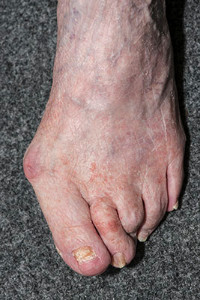 When pressure is put on the joint of the big toe over a period of time, the foot condition referred to as a bunion may develop. This condition, or foot deformity, appears as a bump on the side of the big toe. One of the most common causes of this deformity is ill-fitting or tightly worn footwear. Existing conditions may also factor into the development of a bunion. Flat feet, gout, injury to the foot, and connective tissue or neuromuscular disorders may all increase the risk of developing a bunion. Bunions can be rather painful, often causing discomfort when wearing shoes or walking. This condition can also cause the big toe to feel numb, as well become red and inflamed. For more information on how to treat a bunion, please speak with a podiatrist for professional advice.
When pressure is put on the joint of the big toe over a period of time, the foot condition referred to as a bunion may develop. This condition, or foot deformity, appears as a bump on the side of the big toe. One of the most common causes of this deformity is ill-fitting or tightly worn footwear. Existing conditions may also factor into the development of a bunion. Flat feet, gout, injury to the foot, and connective tissue or neuromuscular disorders may all increase the risk of developing a bunion. Bunions can be rather painful, often causing discomfort when wearing shoes or walking. This condition can also cause the big toe to feel numb, as well become red and inflamed. For more information on how to treat a bunion, please speak with a podiatrist for professional advice.
If you are suffering from bunion pain, contact Dr. Steven Schwartz of Pennsylvania. Our doctor can provide the care you need to keep you pain-free and on your feet.
What Is a Bunion?
Bunions are painful bony bumps that usually develop on the inside of the foot at the joint of the big toe. As the deformity increases over time, it may become painful to walk and wear shoes. Women are more likely to exacerbate existing bunions since they often wear tight, narrow shoes that shift their toes together. Bunion pain can be relieved by wearing wider shoes with enough room for the toes.
Causes
- Genetics – some people inherit feet that are more prone to bunion development
- Inflammatory Conditions - rheumatoid arthritis and polio may cause bunion development
Symptoms
- Redness and inflammation
- Pain and tenderness
- Callus or corns on the bump
- Restricted motion in the big toe
In order to diagnose your bunion, your podiatrist may ask about your medical history, symptoms, and general health. Your doctor might also order an x-ray to take a closer look at your feet. Nonsurgical treatment options include orthotics, padding, icing, changes in footwear, and medication. If nonsurgical treatments don’t alleviate your bunion pain, surgery may be necessary.
If you have any questions, please feel free to contact our offices located in Chambersburg, and Mcconnellsburg, PA . We offer the newest diagnostic and treatment technologies for all your foot care needs.




